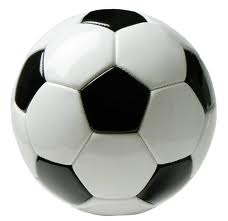Observations from Toddler Soccer Class
 My two year and a half year old daughter Abby started “soccer” class a few months ago. Here are some observations from the class, from the perspective of a father who is interested in movement health.
My two year and a half year old daughter Abby started “soccer” class a few months ago. Here are some observations from the class, from the perspective of a father who is interested in movement health.
1. Kids like open green space
The class take place on an indoor soccer field. The surface is green, soft, smooth and even. Even though it's artificial turf, it’s a thing of beauty!
As soon as the kids hit the field they start running around with a smile on their face. I can feel it myself. There is something about all that open green space which is very invigorating.
I find this interesting because my daughter is small enough to have lots of room to run in smaller spaces – the halls of our house, the basement, our small backyard, or the sidewalk. Of course she uses these spaces for running, but there is something about the soccer field which seems to evoke a more expansive sort of movement behavior from her almost immediately.
It makes me bummed she is not exposed to this type of environment more often! Personally I grew up in a neighborhood with lots of one acre grass yards. In the neighborhood where we live now, the yards are much smaller, and I see less vigorous play from the local kids then what I remember from my youth.
It seems that when toddlers are put in the right environment, healthy movement behaviors just emerge naturally. We try to go to the park a lot, but godammit, I wish we lived in a park.
2. Talent is very hard to separate from interest
As someone who has played competitive sports, I like to watch kids play and try to identify which ones are physically gifted. One thing I notice is that it is hard to determine whether kids excel in a particular activity because of some inborn talent, or because of their level of interest. The kids who progress quickly in anything - reading, riding a bike, monkey bars, whatever - are always the ones who show the most interest.
In the context of soccer or other ball sports, there are some kids who just love balls and spend many hours a day kicking or throwing them. Others could not possibly care less about balls and avoid them almost completely. Of course the kid who gets more practice will develop more quickly. Perhaps a large part of what we consider to be “talent” is just an interest in focusing in a certain direction.
My two year old nephew Emilio has always been incredibly interested in numbers and letters, and will spend an amazing amount of time learning them. And now he is reading and writing. At age two! Is he a genius or is he just unusually focused? Who knows? Probably a little of both. Either way, he is very cute.
3. Soccer class is not really about soccer
The kids in the class are between two and three. So there’s really not that much soccer going on. Most of what is done doesn’t even involve a ball! Which makes sense.
Soccer is a specific skill which must be built on top of other general skills such as running, agility, or single leg balance, which young kids have not yet fully developed. If you just let a two year old play around in a generally healthy way for a few years, he or she will become a way better soccer player, even if they never ever touch a ball.
I’m sure our soccer teacher (who is great) knows this, because most of the class is just general playing around kind of stuff. But there are some occasional attempts at learning specific soccer skills (probably mostly to placate the parents who are wondering why they paid money for a soccer class). For example, today the kids were instructed to do the “soccer dance” - put one foot on top of the ball and then switch to the other foot.
Of course half the kids elected not to participate in this particular drill. My daughter started running around with her arms out like an airplane, and then she spun until she fell. (And then she started crawling and barking like a dog.) My first instinct as a lame parent was of course to say - “Abby, come over here and do the soccer dance”, but then I thought twice - she was probably developing a far better movement foundation for soccer by following her own playful instincts than doing a specific drill. As I’ve written about before, learning, especially motor learning for kids, is really all about play.
For Abby, the soccer dance didn't look like play, so she avoided it in favor of something more productive: in this case, barking like a dog.
Conclusion
Well I really wasn’t sure where this post was going when I started. Perhaps it was a way for me to figure out whether to sign up for soccer class next season. I’m not sure I will.
Maybe I’ll just make an effort to get my daughter into some green open space more often. Of course that means getting wet for most of the year, this is Seattle. And if there’s a soccer ball out there, that will be more fun for both of us. Personally I don’t like to run unless I’m chasing after a ball.
And I do like the soccer dance, even if Abby doesn't. Yet.
For some more articles on child development as it relates to movement, see below:
